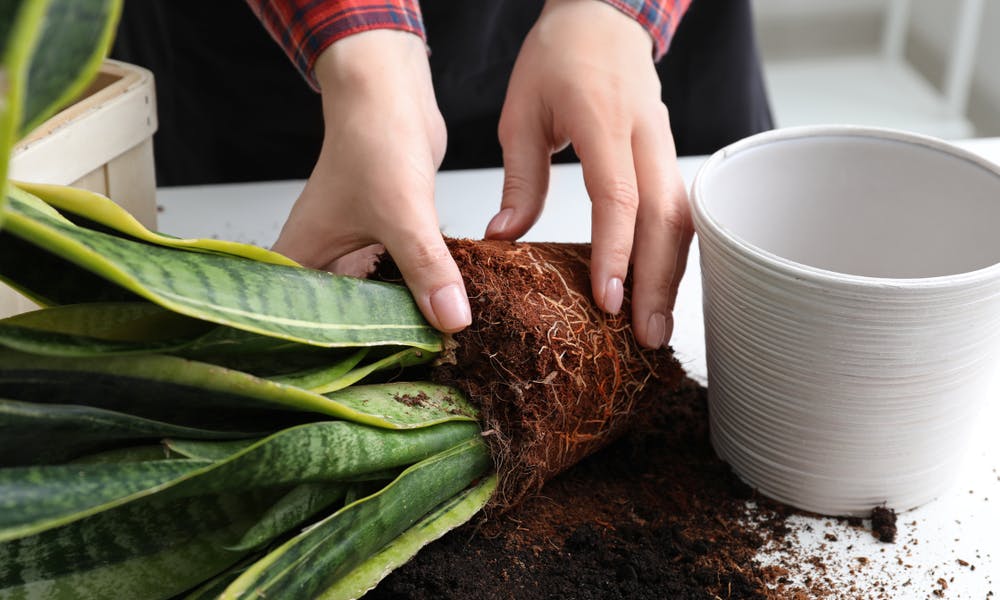Repotting a plant is not as difficult as it may seem, it may seem like a hard task because a lot of things can go wrong like damaging the plant by removing it incorrectly or not repotting it in the right way. This could cause the plant to die. It is an essential step for plants to grow well; it provides plenty of space for their new roots to grow, and there is also the benefit of being able to renew the organic matter that your plants need.
Most indoor plants are repotted, and some outdoor plants that grow in pots or containers should also be repotted frequently. There is a need to know how to prepare a new pot, remove the plant from its old pot, and prepare the plant for its new pot, which makes repotting easy and allows you to enjoy the joy of repotting a plant successfully.
This article provides you with information on the following:
• Why do potted plants need repotting
• Preparing a new pot
• Preparing the plant
• Repotting the plant
• Precautions when repotting
• Best season to repot
• How to repot large plants
Why Potted Plants Need Repotting
Plants need nutrients that are present in organic matter in the soil; it is crucial to the survival of a plant but is a limited resource. Plants collect and feed on these nutrients, then watering drags them down to the bottom of the pot, thereby washing them out and leaving the plant lacking. Repotting then helps to replenish the reserve of organic matter, for the plants to feed and also give them a new space to grow.
Preparing A New Pot
When repotting a plant, you need to choose a slightly larger pot, unless you are repotting for a new look. Select a pot that is 1-2 inches larger and deeper than the old pot. There is a need to select a pot with drainage holes to allow excess water to drain out because you don’t want water sitting at the bottom of the pot and causing root rot.
Disinfect the new pot to get rid of any minerals or debris it may have accumulated and may also be detrimental to plant health. If you intend on using a terra cotta pot to repot, soak it for some time before use. Terra cotta is very porous, meaning it soaks up water quickly.
Cover the drainage holes using something that allows water to pass through like a paper towel or coffee filter to prevent soil from escaping, and it also slows down the drainage process, thereby allowing the water to soak into the soil and help your plant. Put a few inches of soil in the new pot to serve as a base for the roots.
Preparing The Plant
You need to water your plant as it makes it easier for it comes out of its old pot if the root ball is moist. Carefully remove the plant from its old pot. If its difficult to remove, you can lightly tap the bottom of the pot or shake the plant to free its roots.
Using your shears, prune the root ball to expose fresher roots to the new soil, clip off dead, wounded, discolored and fragile roots. Use rubbing alcohol on your shears before use and between cuts to keep your plant healthy. Untangle the remaining roots giving the roots more contact with the new soil.
Repotting a Plant
Put a layer of soil to give your plant a base, and set your plant on the new soil in the center of the pot. Also, make sure it’s sitting upright, put soil into the pot all around the root ball until it is even. The plant is supported and can stand on its own, and leave an inch below the top of the pot to help avoid spillage when watering. You may need to stuff the pot if it’s a top-heavy plant as it helps to keep the plant steady and even.
Water your plant thoroughly; it helps the plant’s roots soak up the nutrients from the soil and adjust to the new pot. You may need to add more soil to fill in the empty spots once the water goes through the soil. It is best to keep your plant out of the sun and high humidity after repotting.
Precaution When Repotting
Some plants have a bit of a toxic sap like the peace lily, so when handling these plants, its best to wear gloves. If you plan on splitting some of the plants, wear glasses or goggles to keep the sap from squirting into your eyes. Plants are tender and usually don’t like to be handled excessively; in some cases repotting can trigger transplant shock. It is usually mild when the plant is handled with care.
Best Season To Repot A Plant
Knowing the season to repot is vital to the success of the repotting. The beginning of spring is the best season to repot, seeing as the plants enter a vegetation phase (a leaf growing phase) and is best equipped to deal with the changes.
Newly purchased plants need to be repotted because they are sold when they have maximized their pot. Young plants need to be repotted at least once a year to maintain their growth and health, while larger plants should be repotted every two years.
How To Repot Large Plants
Repotting a large house plant can be as easy as repotting a small one seeing as they have the same requirement.
If the plant has gotten to a size that does not allow repotting, then the alternative is to renew the surface soil regularly. It means to remove the old soil to a point where the roots start to show, be careful not to wound them, and once you remove the soil, simply fill the space with new soil mix and water.
